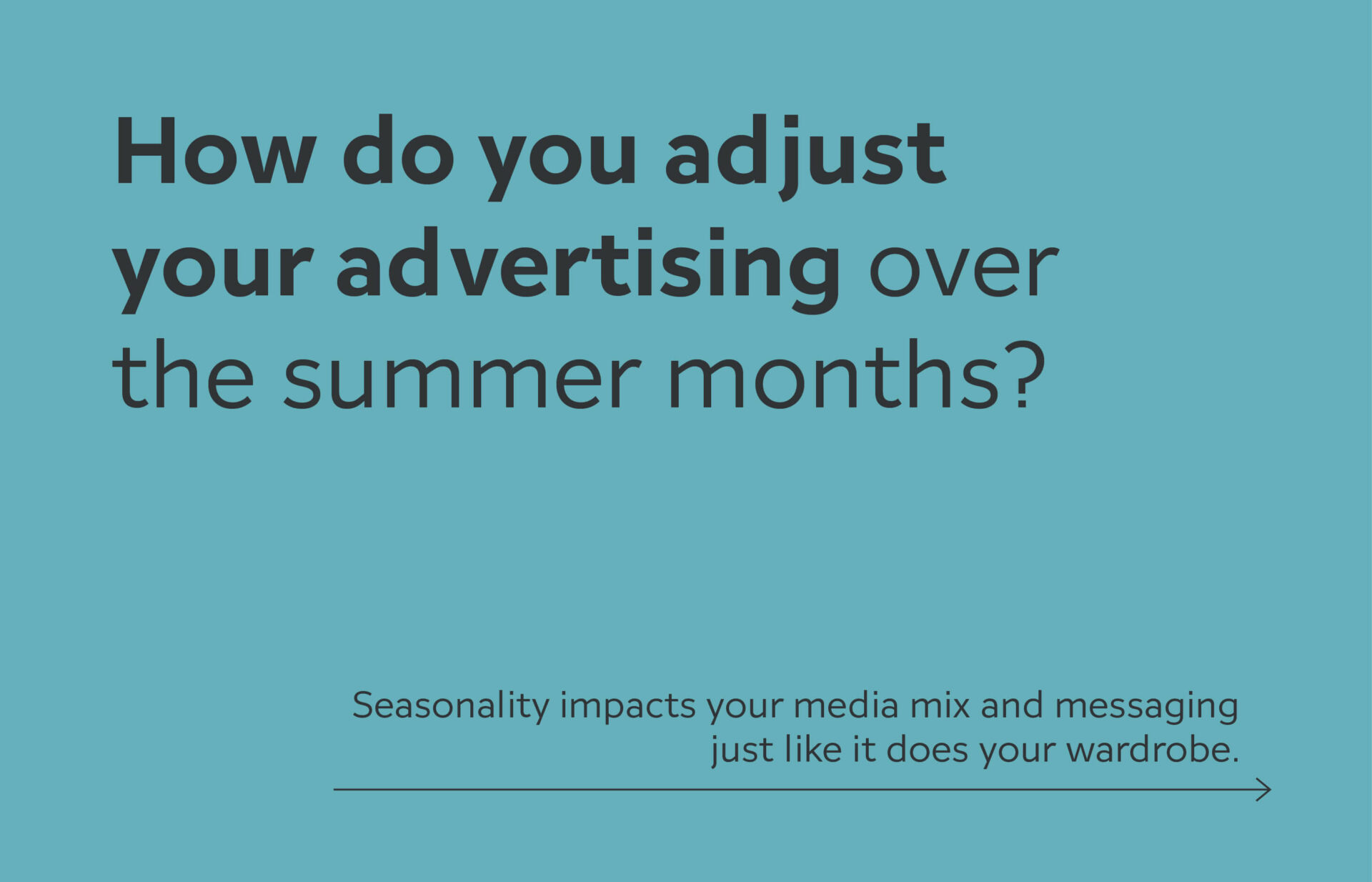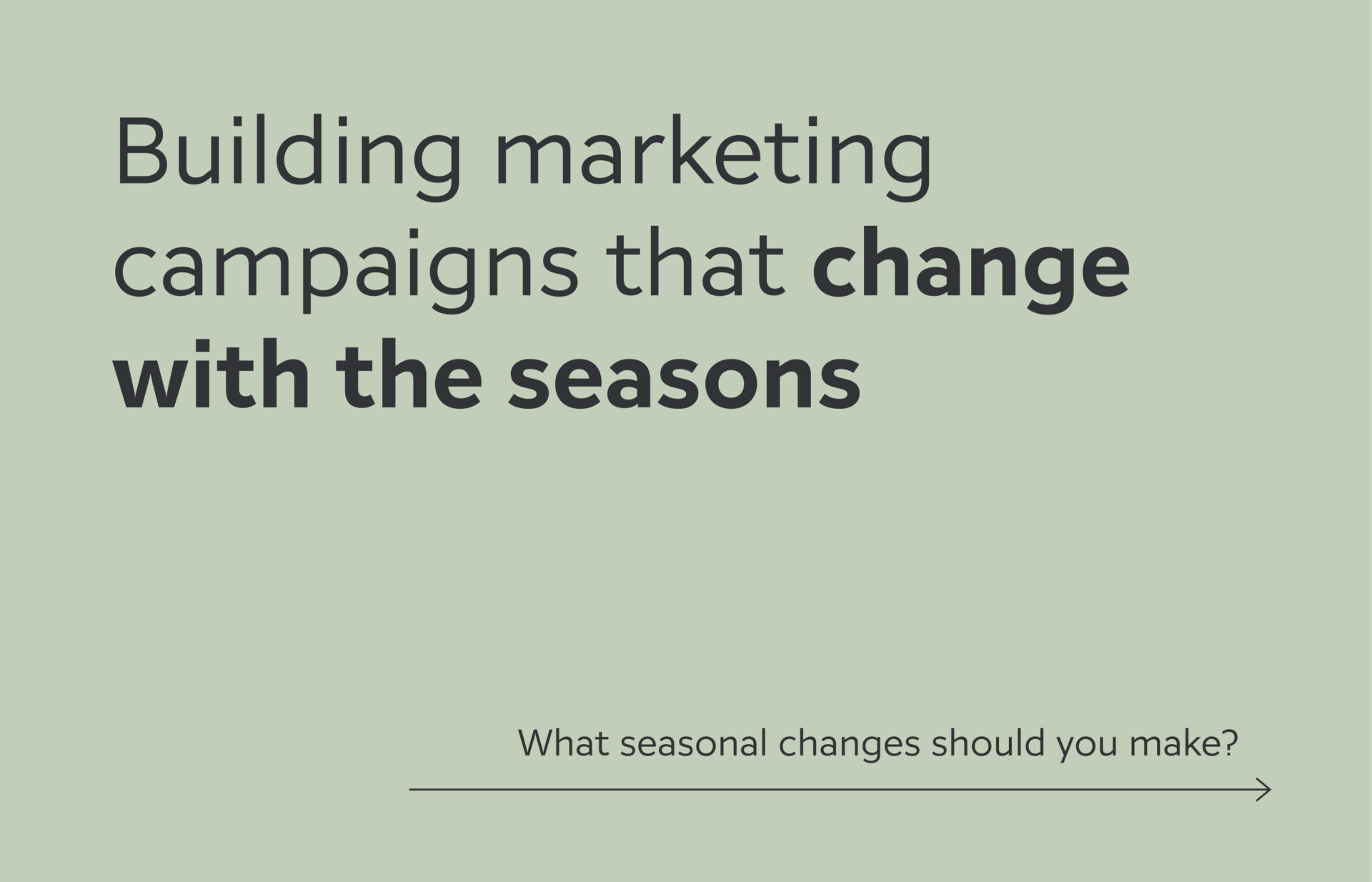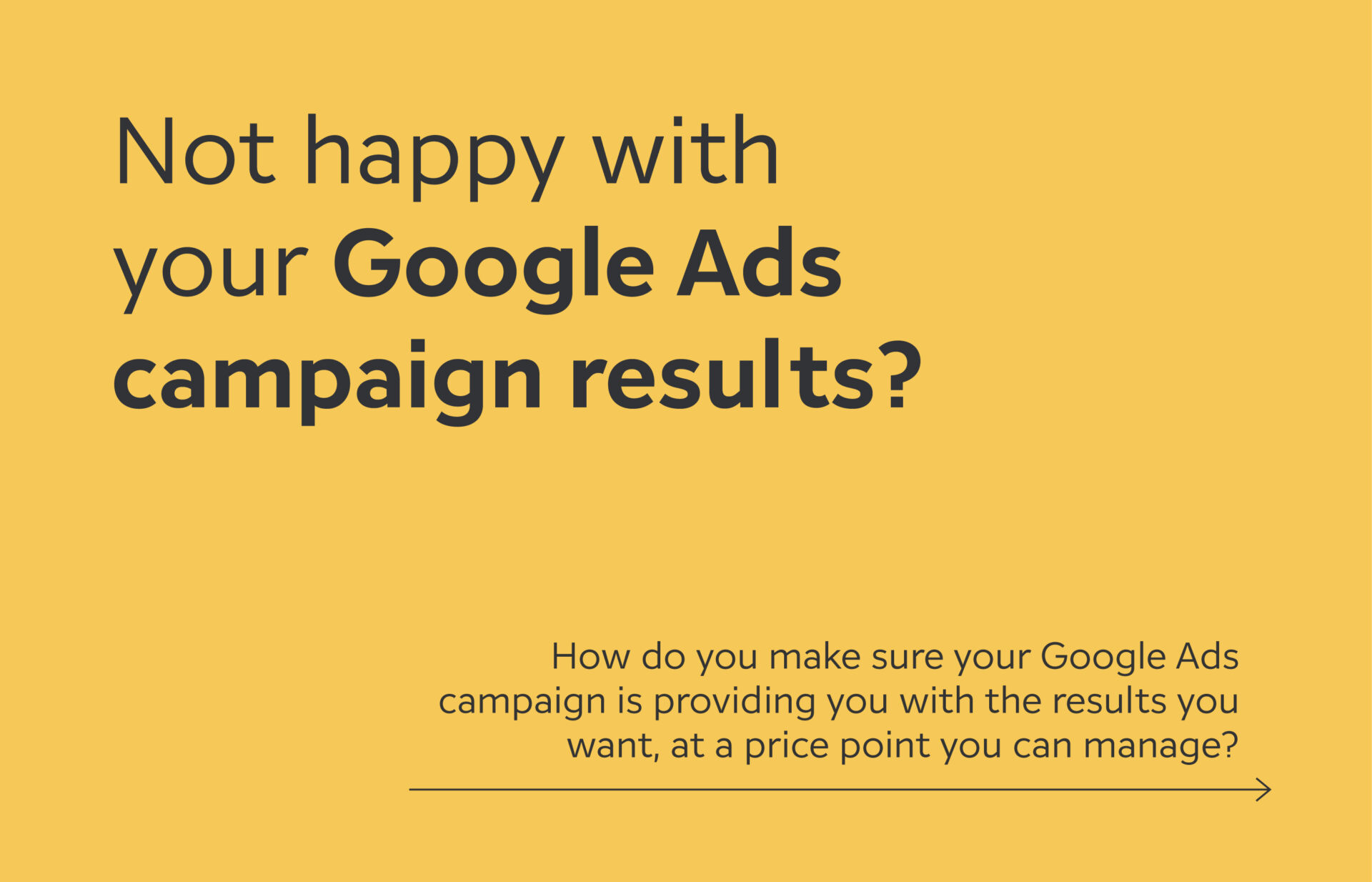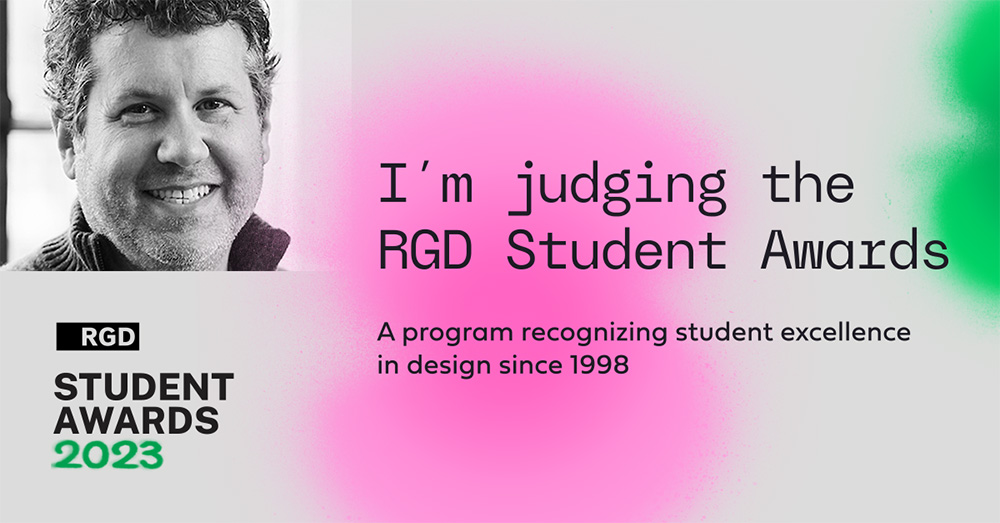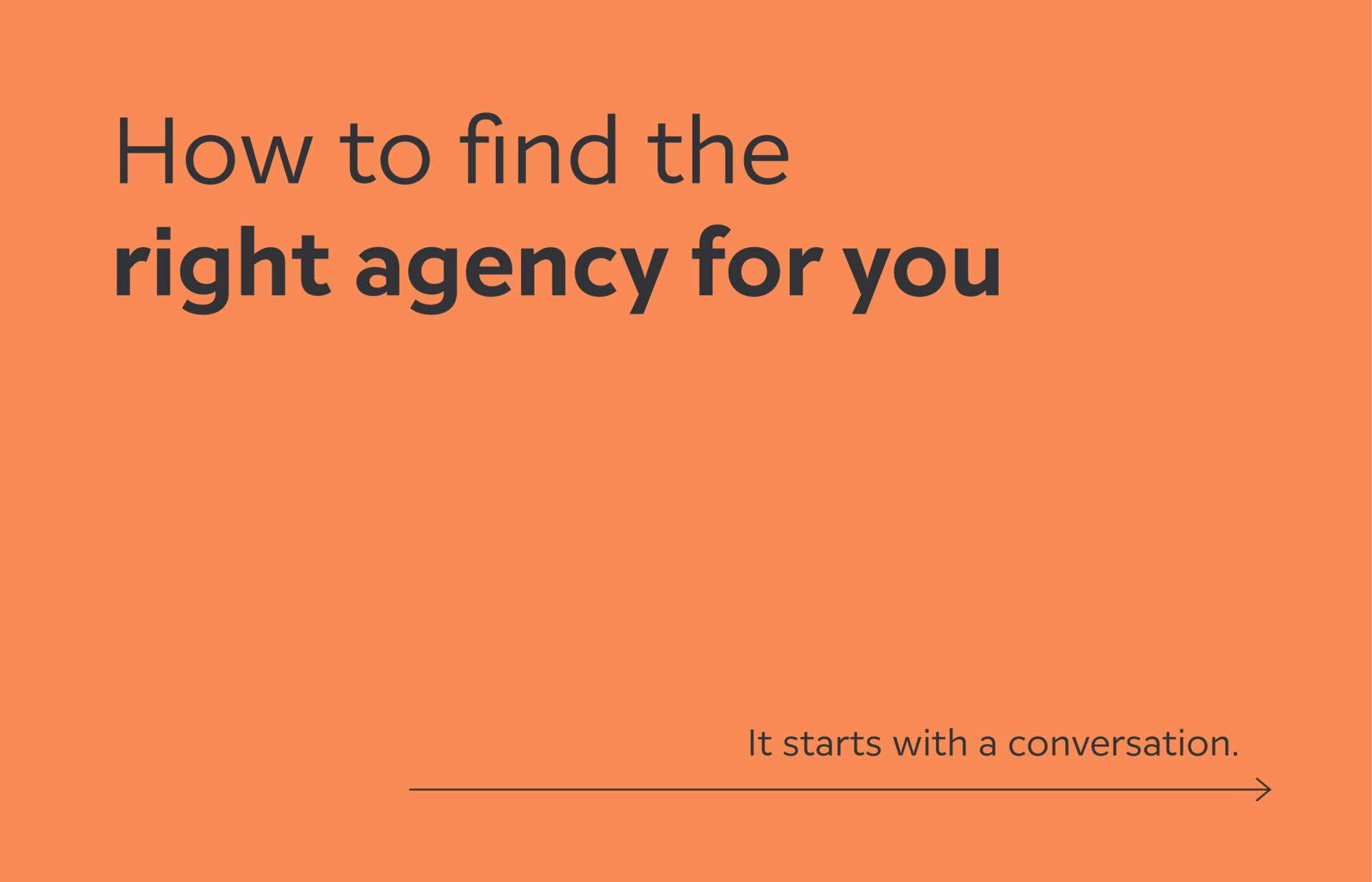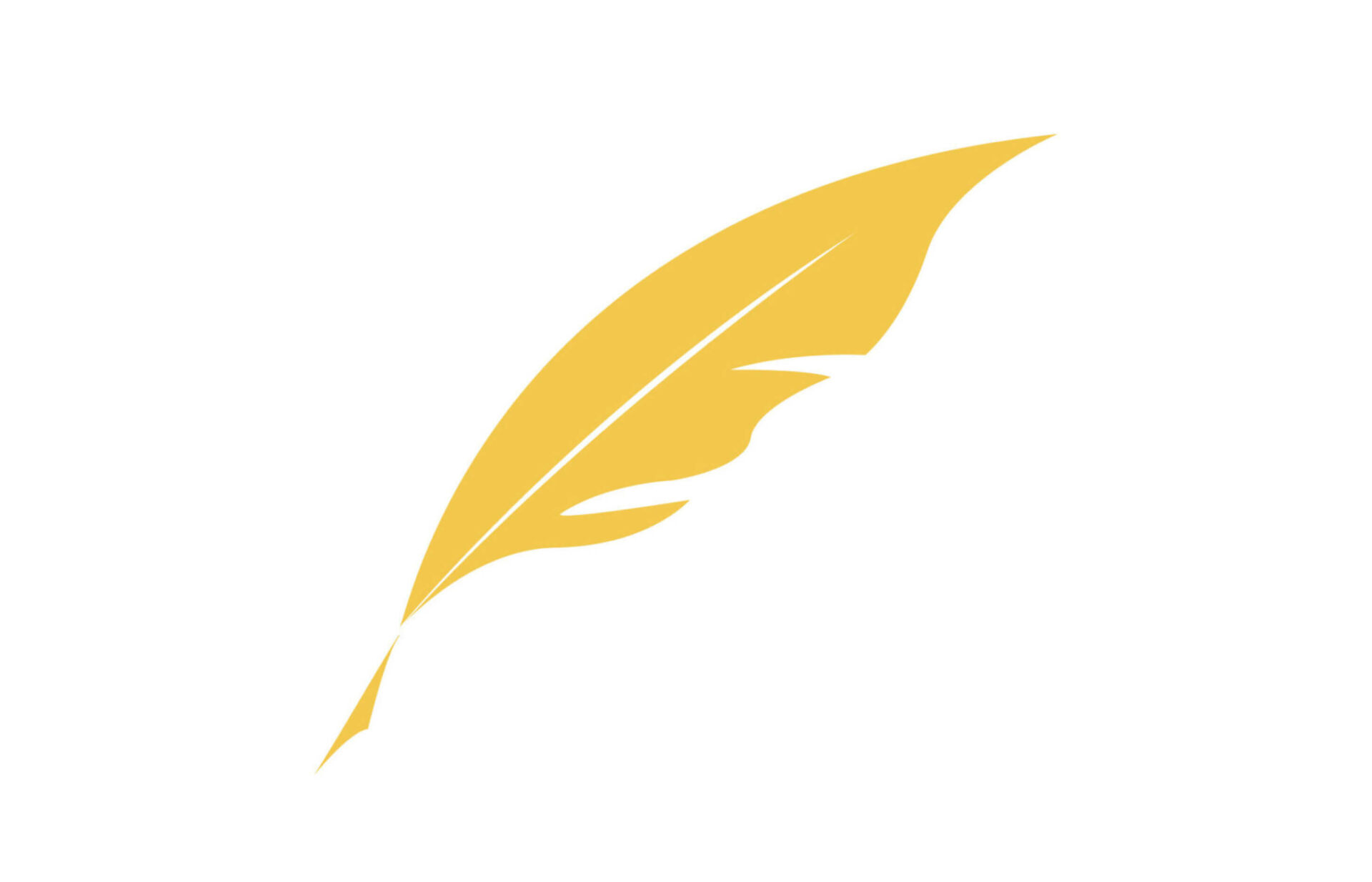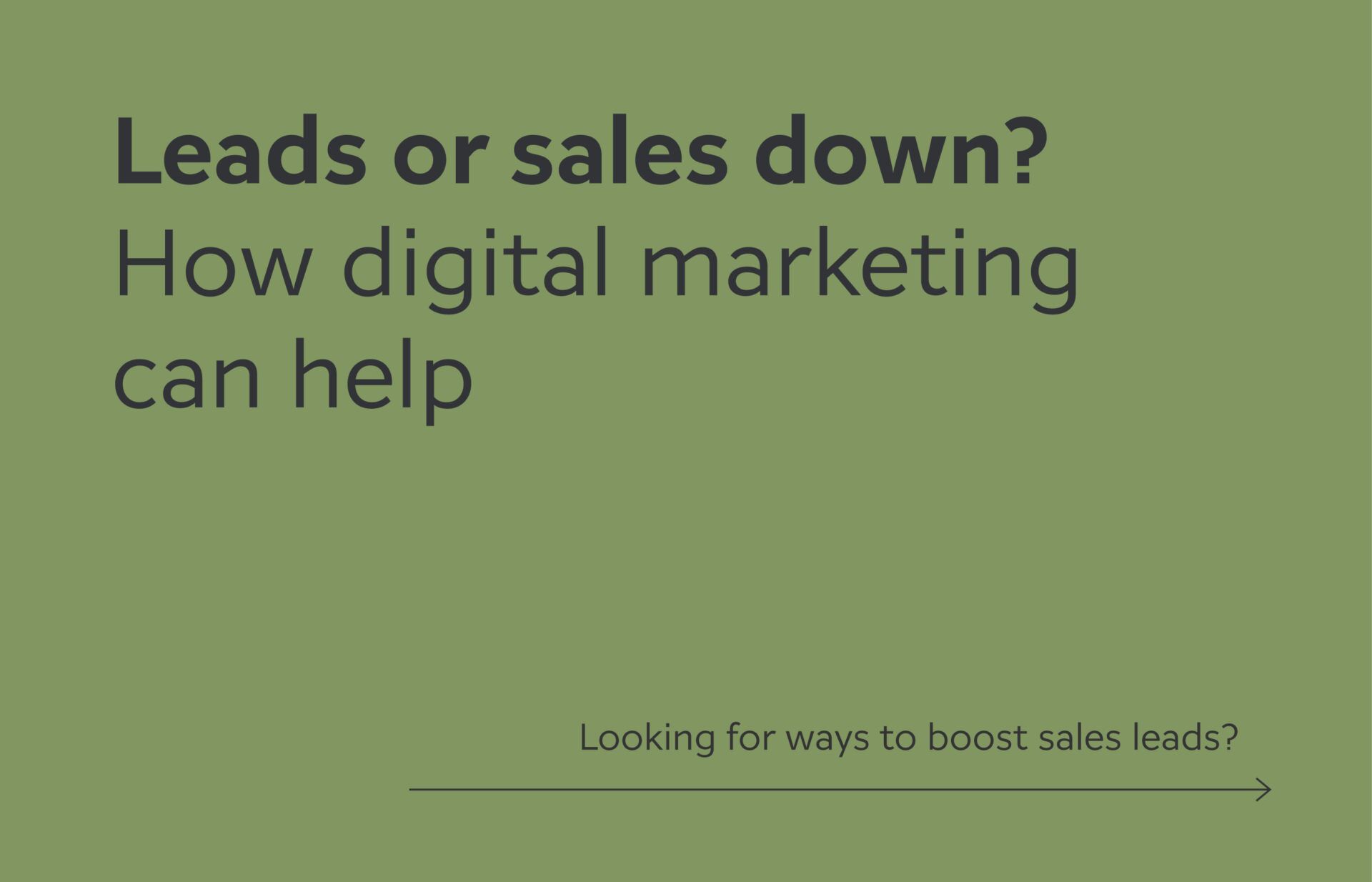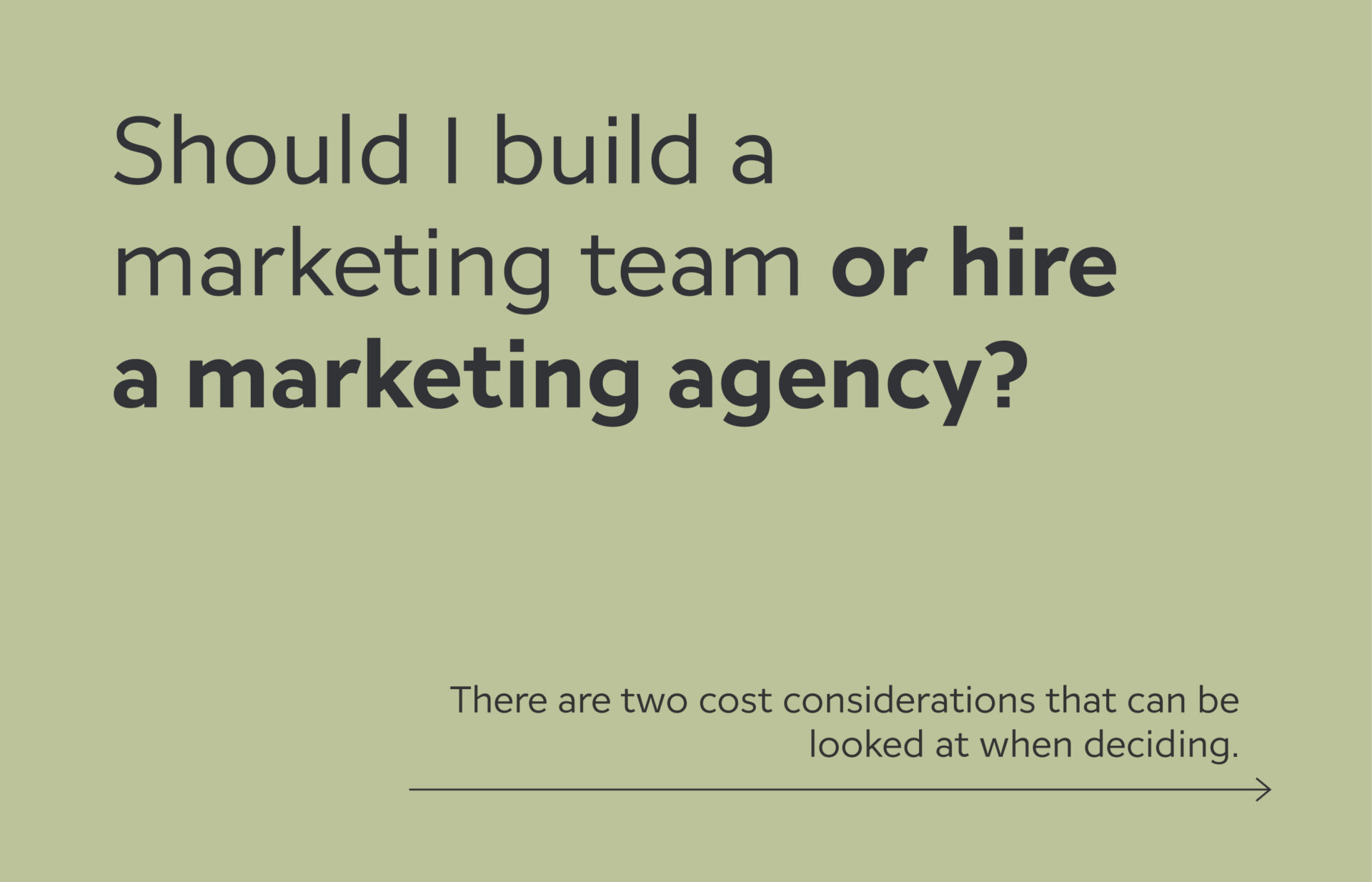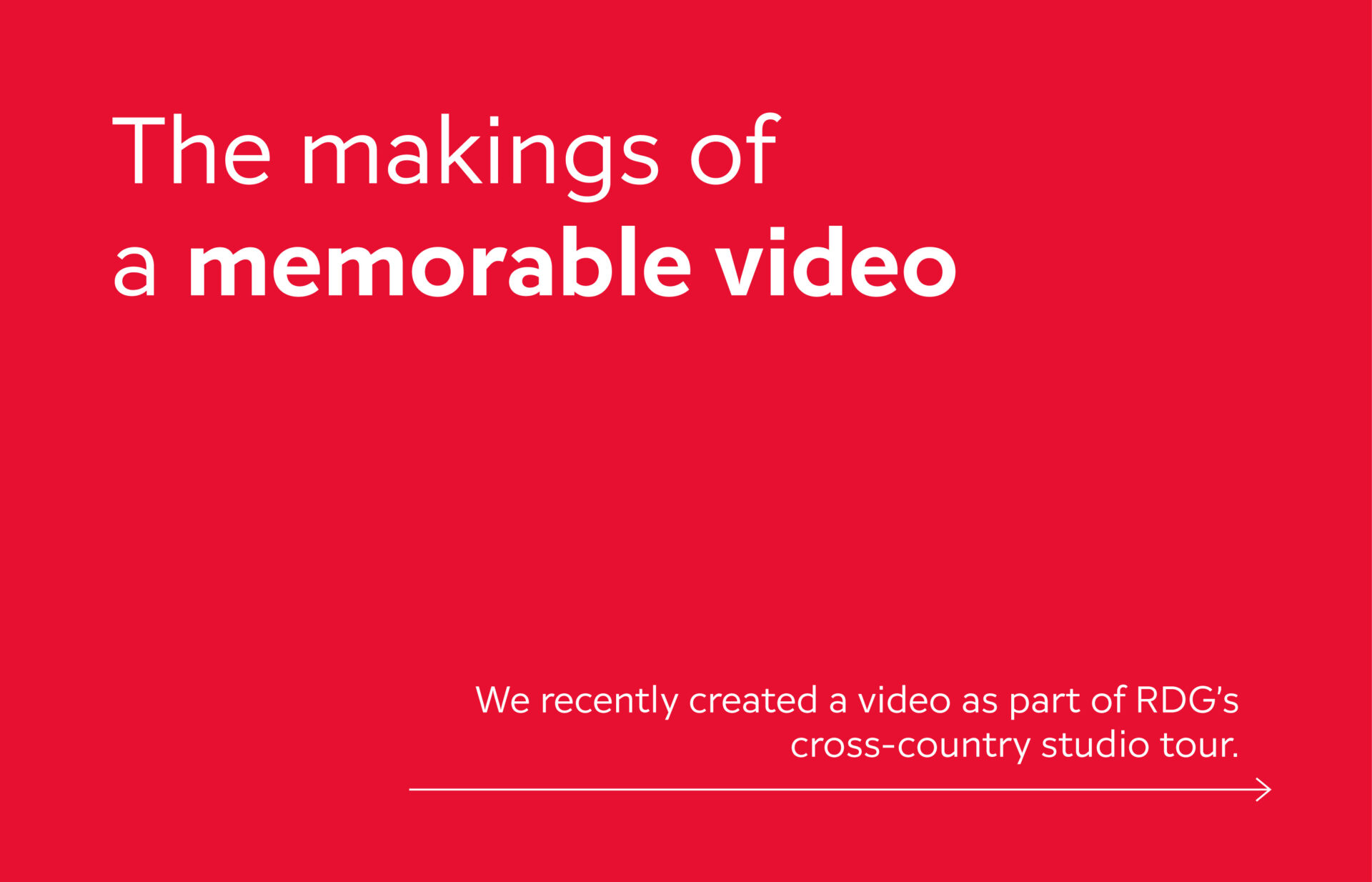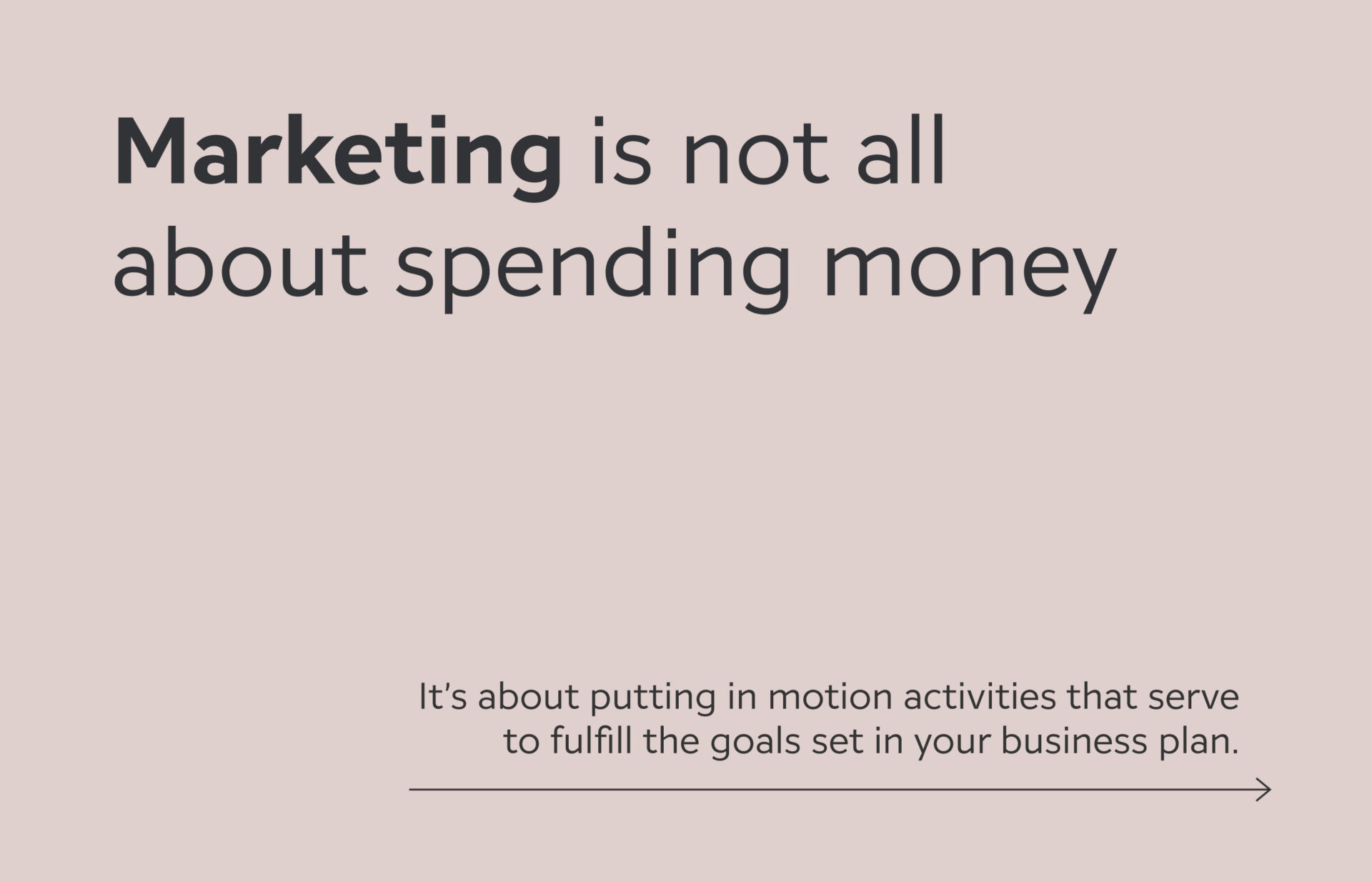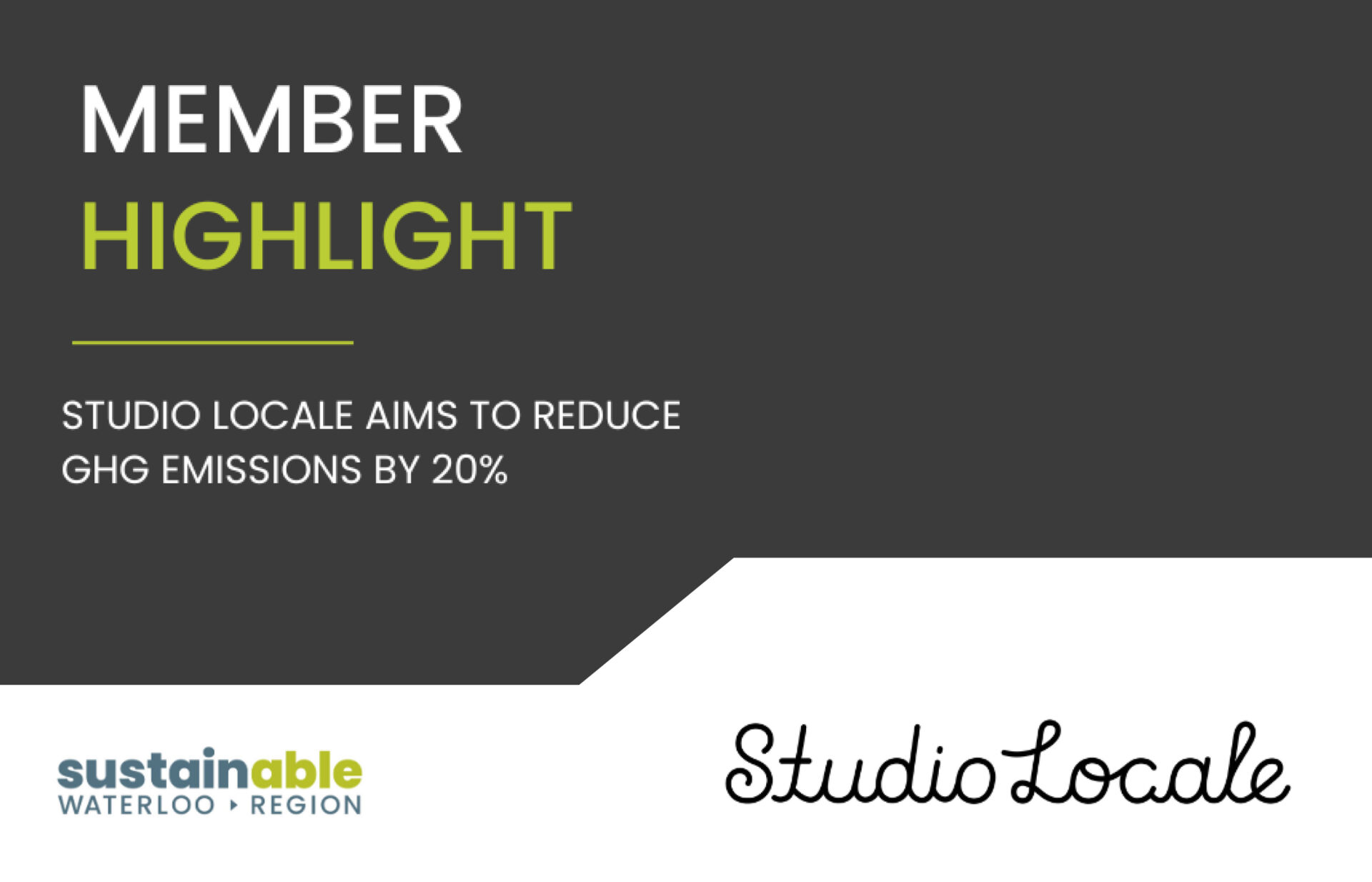Summertime Marketing Media Mix
With the warmer weather of summertime, people are eager to get out of their homes and enjoy the great outdoors. We are all craving the sun and looking to be outside. That change in lifestyle leads to a different media consumption as people tend to stay away from their TV and spend less time on social media feeds.
“Audio ads in the summer can help reach your target audience when they’re less likely to be distracted by a cluttered media environment”
So how do you adjust your advertising over the summer months? Consumers typically increase their audio listening as they head out on a road trip, relax at their campsite or on a cottage dock, or are gardening in the backyard. So audio media can be an effective addition to your media mix over the summer months. Your messaging can also reflect the change in season, and be adjusted to work better for passive listening.
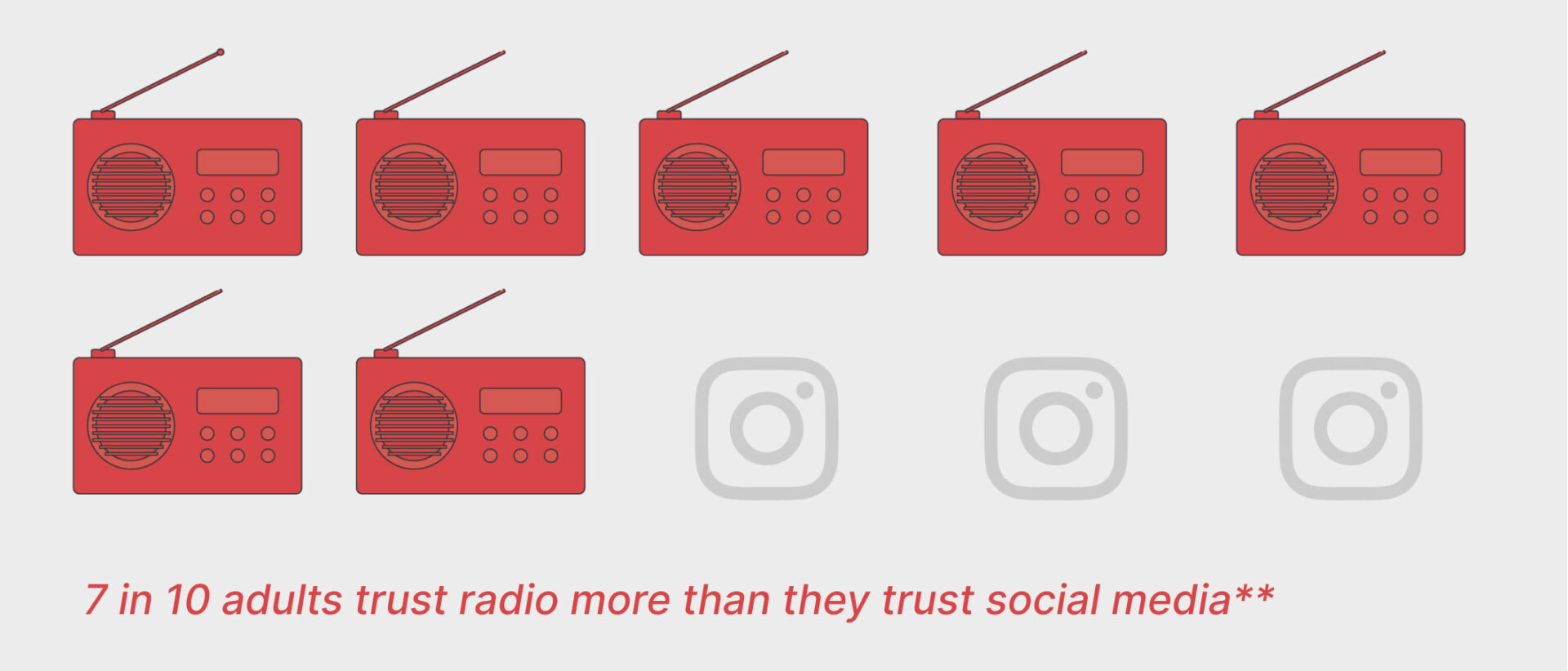
Seasonality impacts your media mix and messaging just like it does your wardrobe. Planning for the changing seasons can help improve your media ROI.
Source: **Young Canadians More Trusting of Information on Social Media Than Other Generations
Seasonal Marketing Campaigns
Building marketing campaigns that change with the seasons
Having consistent marketing throughout the year definitely helps in building brand awareness and driving sales. When you build marketing campaigns that change with the seasons, it’s a smart way to leverage naturally occurring events or buying trends over the year. It also can help make the most of your marketing budget and have a positive impact on your ROI.
What seasonal changes to make?
Your strongest season will depend on your individual business. So your individual marketing campaigns should be based on your yearly demand and sales fluctuations. There are so many considerations to look at when you’re building your campaigns. What works for one organization may not work for another, so you need to look at your specific business and build what makes sense for you. As you create your marketing campaigns, here are some of the key elements to look at and how you can change them over the course of the year.
Changes to your messaging
Making updates to your messaging can be a quick way to keep your ads relevant and your audience engaged as the seasons change. It can reflect features/benefits during peak purchase times, build brand awareness and trigger future purchase planning, recognize special events or celebrations – whatever will resonate with your target audience and aligns with your brand.
Changes to your media channels
As you plan the media channels you will use over the year, having an understanding of where your target audience will be can help you determine which ones are best when. You should consider where your target market can discover your product or services, and when they will need it. When are your clients actively searching for your solution vs. when it’s more effective to build brand awareness for future purchases? What marketing channels best support any seasonal goals? Now’s the time to consider all of the channels – digital media, traditional media, video, print, and radio ads. There may be some hidden opportunities to connect with your customers.
Changes to the frequency
Similar to considering which channels make the most sense, how often ads should be presented can also help optimize your marketing ROI. Ramping up before and during a busy sales season and then adjusting to maintain brand awareness on the off season is an efficient use of marketing dollars.
Changes to your visuals
Your visual brand can be one of your strongest assets when it comes to brand recognition. Giving it a seasonal lift or shift can be an effective way to grab your customers attention in the midst of the usual visual stimulation.
Changes to your promotions
Outside of your media elements, you can also look at running special promotions leading up to and during your peak season. In addition to straight price savings, you can also consider cross-promotions with other companies that compliment your products or services. Running ads, email campaigns or dropping flyers are some of the channels to let your customers know of any seasonal offers.
Netflash Internet Solutions
The Backstory:
With minimal in-house marketing resources, Netflash is a Waterloo Region-based Internet company that required outsourcing of a marketing agency. In addition to high-speed Internet, Netflash Internet Solutions also provides various phone and TV packages. Competing against larger ISPs, the team is busy implementing bigger strategic projects in addition to managing the day-to-day activities.
Aware that their brand messaging and marketing needed some TLC and dedicated resources, Netflash contacted Studio Locale to be an extension to their team and manage all of their marketing initiatives.
What We Delivered:
We have worked with Netflash on different projects over the past years. Because of this, we have a fairly strong understanding of their business, products, target audience, competitive landscape, and business challenges. We were able to jump right in and begin with some tactical execution for inflight initiatives and recommend some branding tweaks. (If we don’t have an existing relationship, fret not. We’ll buckle down and learn everything we need to know to be an effective marketing extension of any organization.)
Understanding the need for ongoing communications to support various expansion initiatives, we created a communication schedule, crafted quick messaging and designed templates for immediate distribution. Flyers and emails were distributed, and landing pages were created to support and achieve conversion targets.
With the immediate marketing needs covered, we looked at the current competitive environment. There were some aggressive competitive campaigns and we wanted to better position Netflash against them. As many business owners know, it is challenging to define your unique value proposition (UVP), and Netflash’s UVP and differentiators had become complicated in their messaging. We took the team through an exercise to clarify and simplify their core values and value proposition.
We presented messaging options along with a supporting visual lift for each one. The goal for each creative marketing approach; make Netflash easy to remember, support brand awareness and have a single message that reinforces their differentiators.
Once a direction was selected, we rolled it out across all marketing touchpoints. We updated their flyers, emails, and digital banner ads to reflect the new messaging and support overall brand awareness – Along with specific calls to action based on where and who’s receiving the message.
Keeping open communication between Netflash and the SL marketing team is critical. We have standing monthly meetings to review activities, and results, and determine if any shifts are needed to support the team.
The Results:
The Netflash team is happy to have dedicated marketing resources supporting their internal efforts. Within the first year they have seen:
- A new targeted service area achieve a 41% market share rate, just 4 months after launching their services
- New leads through their website increased 20% over the previous year thanks to a compelling digital ads campaign
- Direct mail and digital ad campaigns in their existing targeted service areas help them become the market leader with a dominant market share in those areas
Industry
Communications
Discipline
Brand messaging, graphic design, media planning, marketing materials
Project Team
Erynn Hayden
Truc Hoang
Jessica McLachlan
Anneta Wamono
Philip Mondor
Robin Mondor
Improving Google Ads Campaign Results
Not happy with your Google Ads campaign results?
The reality of your company appearing at the top for an online search these days is that you need to pay to rank. This makes the ongoing management of your Google Ads campaign a priority on your to-do list. And while you want to rank in one of the top positions, you don’t want to have to throw more money at it than you need to. So, how do you make sure your Google Ads campaign is providing you with the results you want, at a price point you can manage?
Let’s start by looking at the metrics that are usually a good indicator that your Google Ads campaign may not be running effectively.
Your Google Ads are not showing
Your ads are not showing on the search engine results page while you try to search for the relevant keywords
Not seeing the volume of leads you’d like
Your monthly Google Ads report is showing impressions but your click through and conversion rates are low.
Receiving a lot of leads but the quality isn’t there
Your sales team is receiving leads but the contact profile doesn’t align with your target customer.
Your keywords list is huge
In an attempt to hit all of the possible keywords, you’ve included every possible keyword, essentially casting a very large net that’s not catching the leads you want.
How you can improve your results
Keyword review
A close review of your keyword list, as it relates to what your target audience would be searching for, will help your ads present to the right audience at the right time. Just as important as your targeted keywords are those that should be on your negative keywords list. Make sure you include only search terms that align best with your ideal customer.
Updating negative keywords
Negative keywords let you exclude irrelevant search terms from your campaigns and help focus on only the high quality keywords that drive results to your business. Updating negative keywords regularly will save budget on Google Ads, as they will enable you to attract the right leads and avoid searches that have low chance to convert.
Target specific locations
Be specific with the locations you want to show your ads to and select the exact areas that your business is serving. That will help increase conversions and help use your ad budget in an effective way.
Improve the ad quality
Ad quality is evaluated on a number of factors: how relevant your ad text is to search intent, how likely users are to click your ad and the quality of users’ experience once they land on your website. Ads that closely align with the intent of the search query are highly likely to receive more clicks.
Bid strategy
Determining a bid strategy that best serves your business goals is one of the key factors that impacts the effectiveness of your Google Ads campaigns. Whether you want to build brand awareness, lead traffic to your website, increase brand consideration, or encourage customers to take a direct action on your site, the right bidding strategy is crucial.
Website content and user experience
It may be that your ads are presenting at the right moments, but the supporting content on your website isn’t convincing enough for them to get past the first page, fill out your contact form, or call. User experience on the landing page can have a huge impact on your Google ads effectiveness. The better your website content, the less likely users will bounce off the landing page without taking action. With more useful information and a better experience, the better your ad quality score will be, which helps your ad show in a higher position.
Feels like too much?
Our team can help! We’ll manage all of these campaign components and considerations for you. Each month, we’ll provide you with a summary of results and actions taken during the month to optimize the campaign. We also provide recommendations for additional tactics to improve the campaign performance so you are not wasting your money.
Reach out and our Google Ads experts will be happy to talk next steps!
Judging For The 2023 RGD Student Awards
Phil is a judge for the 2023 RGD Student Awards
Anyone who knows Phil knows of his love for great type. He is one of the judges for the 2023 Award for Typography in this year’s RGD Student Awards.
How to select a marketing agency
How to find the right agency for you
The thought of selecting a marketing agency that best fits with your organization may feel overwhelming at first. There are many agencies to choose from – all with different approaches, experiences, and price tags.
Ultimately, you want to find a team that understands what you need, and is easy to work with. Here are a few tips to help make the process a bit easier and hopefully enjoyable.
Start with a conversation
When beginning any relationship, it’s important to make sure you are a good fit for each other before going all in. You will be able to determine how invested an agency is in your success based on the types of questions they ask you. In turn, you can gain insights into their approach to your specific challenge and the experience they will bring to the table.
Be prepared to share
Be ready to provide specific goals and targets, challenges, timelines and budgets. Without this information, it will be difficult for any agency to come back with a viable approach and recommendations. (We equate it to asking an architect to design you a house without sharing elements of what you have in mind. You might be thinking of a classic Georgian and the architect is thinking contemporary; 2 storey vs. bungalow…. You get the picture.) If you don’t have those details yet figured out, be honest about that too. Many agencies can help define and set goals as part of the strategic planning process.
Collaboration is key
You feel a good connection with an agency but aren’t sure their recommended approach is the right one. Don’t hesitate to suggest working together to find an alternate plan. There are multiple paths you can take to get you to where you want to go. A good agency will know that and be open to finding the best course of action that works for your organization.
If you feel your organization is at the stage of needing an outside agency, shoot us a note. We’d be more than happy to sit down and have that initial conversation. Shoot us a note and we’ll get started!
Gold Quill Award for Ink-Stained Wretches Ad
We won an award!
Our ad for Ink-Stained Wretches supporting local journalism received an IABC Gold Quill Award of Merit in the Government Relations/Public Affairs category. The ad ran to thank the 29 municipalities across Canada that have passed journalism support motions and encouraged others to join, helping them spread the word about UN World Press Freedom Day.
Mirko and the rest of the Ink-Stained Wretches have been working tirelessly to support and advocate for local journalism in the face of sometimes undemocratic and hostile environments.
It’s a nice feather in our cap! (pun intended!!)
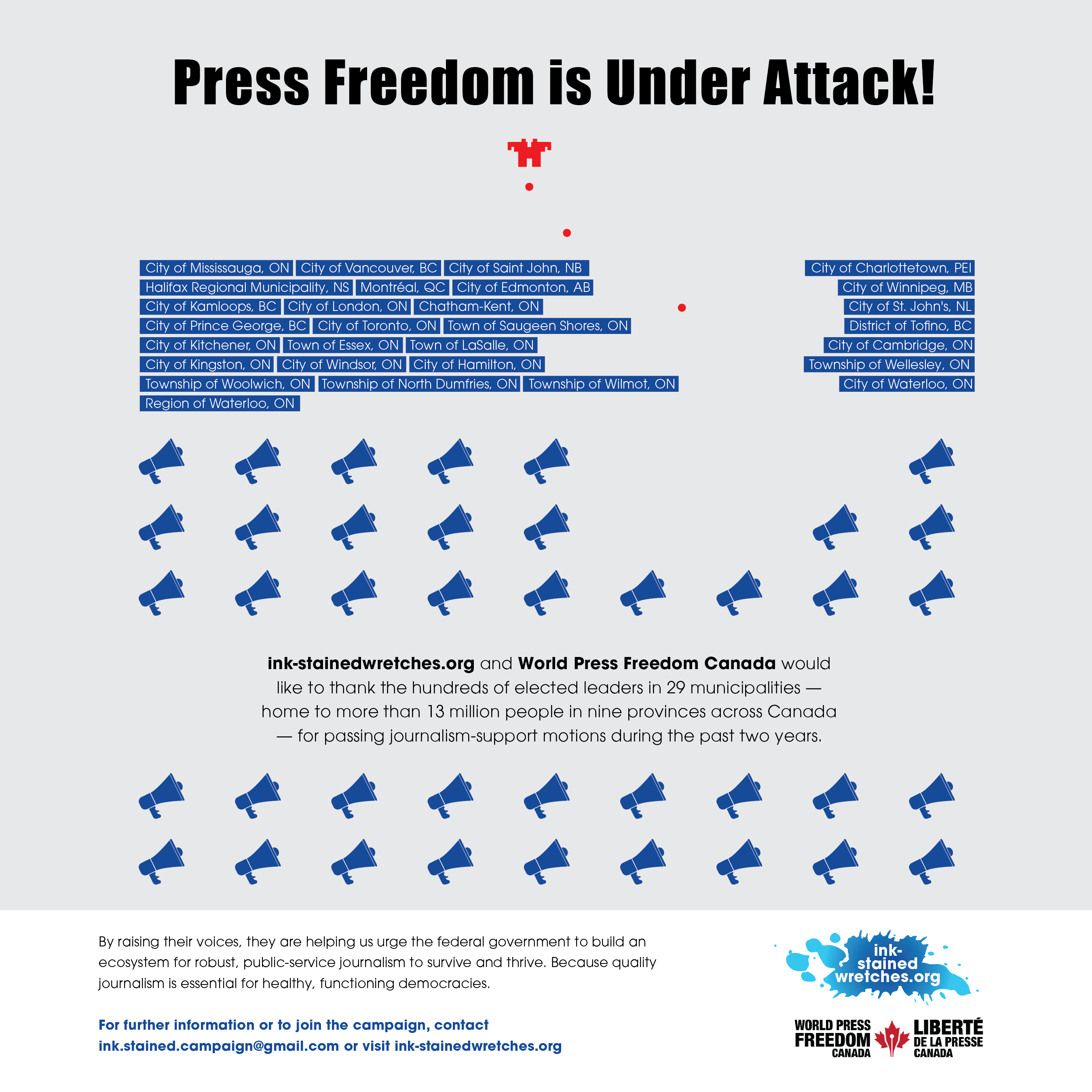
Digital marketing to improve sales
Leads or sales down? How digital marketing can help
Looking for ways to boost sales leads? Digital marketing may be able to help. There are a number of different tactics that you can use to present digital ads and communications to potential customers – both before they need your services, or right at the moment when they are looking for help.
Digital marketing will:
Present your brand at the moment where your prospective customer is looking for a solution
Present your brand as a solution for a specific problem you can help solve
Present your brand before your services are needed to build brand awareness
The most common digital marketing tools include:
Google Ads
Usually the first obvious tactic that companies will identify is Google Ads. Creating a Google Ads campaign that targets customers looking specifically for your services. It presents your solution at the moment they need it. They have already identified a problem, know that they need outside help to solve it, and are ready to invest. Creating and then managing your Google Ads campaign can help feed your sales funnel and build overall brand awareness. Not sure where to start? You can learn more on how to improve your Google Ads campaign from our team here.
Digital Banner Ads
Digital banner ads are an excellent tool for building brand recognition. You can control the sites ads are shown on, when they appear, and how frequently they are presented. Selecting the right approach that matches your target audience will build brand awareness over time. Banner ads can also be presented to match when your potential customers are looking for your products or services. Similar to Google Ads, you can also control the geographic area for where the ads are shown, so you are presenting ads only to customers you can actually support.
Social Media Ads
Depending on your product or service, social media ads can be an effective way to connect with prospective customers. Understanding your target audience and which social channels they are actively using, you can determine if it’s worth your marketing budget to run ads on social channels. (Some social media platforms are also struggling to be seen as trustworthy, so something else to consider before adding social to your media mix.)
Email marketing
When done well, email marketing can be an effective way to keep in touch with your customers, encourage engagement, and keep brand awareness top of mind. There are a few different strategies you can use to approach your email content. Whether you use it for updates on products or services, insights on industry trends or challenges, or loyalty offers, it’s a good way to connect with your audience. And with brand-owned platforms seen as more trustworthy compared to other social media channels, email can be a strong element in your media mix. (Not to mention cost effective!)
With the right mix of digital marketing and advertising, you can build a healthy sales funnel for your sales team. If you are curious what that might look like for your organization, we’d be happy to help you develop a media mix plan and calendar to get you started!
The cost of building a marketing team vs. hiring a marketing agency
Should I build a marketing team or hire a marketing agency?
This is a question many business owners or marketing directors may struggle with. As their business grows and they need to build out a more comprehensive marketing strategy, which approach is the most cost effective, building a marketing team or hiring an outside marketing agency?
There are two cost considerations that can be looked at when deciding what makes sense for your organization – hard costs and time costs. Looking at both of these before making a decision should prevent any surprises down the road.
Hard cost comparison
These costs are the most obvious to compare when looking at building a team or hiring an agency. On the internal marketing team side, hard costs include things like salaries, benefits, equipment and software licensing. We’ve used the average salaries from RGD’s 2021 salary review for the key team members you’d need on your team.
When hiring a marketing agency, there is typically a defined scope of work for a specific time period for an agreed to cost. For our comparison, we’ve used the example of a multi-channel marketing campaign, typically executed over 12 months.
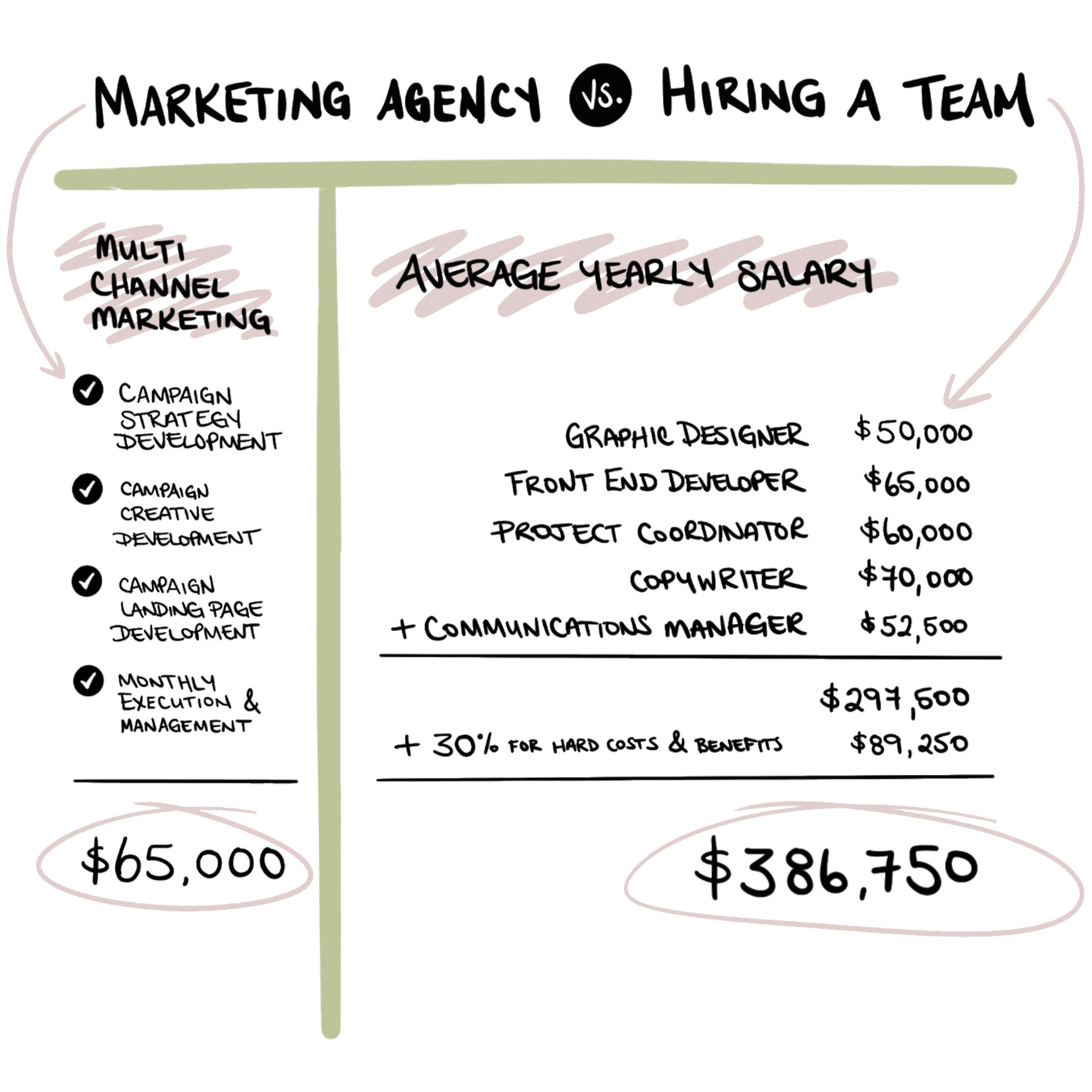
Of course the internal team could work on other projects over the course of the year, but would likely still come in higher than if you hired an outside agency for the same work. Internal marketing teams are most effective when there are multiple, continuous marketing initiatives each year.
Time cost comparison
Time costs are a little bit harder to quantify than hard costs. These are costs associated with the hiring process, training, and ongoing management of an internal team vs the initial engagement of an agency plus any regular touch points.
Looking at the internal team side first, here are few things to consider.
Hiring a team takes time
These are the typical to-do’s when adding a new hire to your team:
- Create the job description(s) and posting
- Post / share / pay for the position to attract applicants
- Sort through all the CVs sent your way
- Interview the top candidates (assuming you can qualify all of their skills)
- Onboard them into your organization
Also keep in mind, during this time you are less focused on any actual marketing initiatives on the go and may lose some of the momentum you’ve worked hard to gain.
Maybe freelancers would work?
There are a high number of qualified freelancers out there that you could contract to deliver a specific component of your marketing executables. Keep in mind that means additional coordination on your end to make sure everything aligns and works with the other freelancers for a cohesive campaign. Rather than focusing on your marketing initiatives, your time may be spent organizing review meetings with different individuals, all with varying schedules, to keep everyone on the same page and on track.

Be wary of unicorns
Wouldn’t it be simpler if you just hire one marketing manager or specialist that can do everything you need? They can write snappy copy, design eye-catching materials, create informative infographics, develop new pages for your website, integrate a media campaign and track the results of everything. The reality is that finding all of that in one person is highly unlikely. Each of those require unique skill sets. And if someone says they can do all that, we’d recommend doing some serious reference checks.
On the agency side, there is still time required to kick things off. This is needed to make sure your chosen agency understands your goals, challenges and the competitive landscape. A good agency will see themselves as an extension of your team and will want to learn as much as they can before building out their approach. (Unsure where to start in selecting an agency? These are our three tips when it comes to picking a marketing partner.)
From there, depending on the project, there may be regular touch points to go over progress, as well as monthly reports or reviews to look at results. The agency should be taking the lead on these updates and making necessary adjustments as you go.
We Were The Client!
The makings of a memorable video
We recently created a video as part of RDG’s cross-country studio tour – an inside look into the creative spaces and teams developing brands and creative communications from coast to coast. As a studio, we knew we wanted something other than the typical ‘real-estate’ style tour of our space. We wanted something that would not only stand out from the other tours, but also be used to introduce our team to new clients. So we reached out to our friends at Astrodog Media to work together on creating a not-so-typical, memorable studio video.
After completing our tour video, Robin & Phil sat down with Matt from Astrodog to talk about the overall experience and how they help clients be the best representation of themselves.
R – Let’s start at the beginning of a project, even before production gets started. What’s Astrodog’s secret sauce/approach to creating videos?
M – We love when teams bring us a creative brief and ask “How would you approach it? What are your suggestions?”. Our approach is a 3 step process, where we start with discovery/diagnostics to learn about the client, then strategy where we look at reference and inspiration to determine tone and feel, and finally creative development that includes the final narrative outline. The output of this process is the creative package, that fully outlines the project production. It gives us a reference to come back to should there be any changes to direction mid-project as to the objectives of the final piece.
P – Everyone has a process. Talking about the process can be boring, but going through it, you realize the work that goes into it, and why it’s so fundamental to the final piece.
R – It sounds similar to our website development approach, where we dig into our client’s business and understand what they need their website to do. It pulls back the curtain a bit for clients to see what goes into a successful project. There are so many different pieces and requirements to be considered.
It can be hard to look at ourselves. So it’s good to have someone help you see yourself from an outside perspective.
M – So here’s a question for you – what did it feel like being on the other side of the table as the client?
P – It can be hard for designers to look at ourselves, and talk about ourselves. So it’s good to have someone help you see yourself from an outside perspective. We really valued you saying, “Can we explore the idea of…”. You heard what we were saying and then came back with a different idea that made the final video better.
M – For sure. There’s always different ways a client can approach a project. Often when clients provide a creative brief or share what they are thinking other teams don’t suggest any new ideas. They’re so used to executing the client’s vision, especially when timelines are tight. Would another team have just done the typical tour video? It would still be a good video. It all depends if you are looking for something better than good.
P – It’s a leap of faith for clients. It’s being open to different ideas, and trusting in the expertise and experience of the team you are working with. For clients with internal marketing teams, there is also the fear of making yourself redundant or seen as not skilled enough if you bring in an outside team or use an idea that’s not yours. But we look to compliment our client’s internal team and skills. We always want to make our clients look great – both to their audience and to their leadership team.
R – The other risk is that you can get stuck repeating what everyone else is doing within your industry. You see what your competitors are doing and then work to do some variation of it. When you are open to different ideas from an outside team, it’s more likely that the end result will be unique to you.
M – Another thing we’re noticing more is the different expectations people have when it comes to videos. We’re all so used to watching TV and movies and can expect internal videos to have that same quality. But then there are videos for social media, where shooting on an iPhone can work. So it‘s also thinking about where the video will be shared.
P – Teams are also considering what is the long-term ROI, where they can use the video across multiple channels or events vs. getting a high number of likes on a single social post.
M – For sure, and our team is all about creating videos that will last for the long term and have a high impact. Sharing the value proposition for a new product launch that will be on their website as well as used for their internal launch. We’ve also done Kickstarter videos where the client hit their target in under 5 minutes of launching their campaign. In both cases, the video needs to tell a pretty compelling story.
P – Not everyone is a good storyteller, and it’s a term that gets thrown around a lot. How does Astrodog bring storytelling to their projects?
M – Storytelling is definitely an art form. Stories can translate across videos, photos, virtual reality experiences and music, it’s all a story that you are telling.
P – We like to help develop a story framework as we go through our branding process with clients. We outline the different elements of the company’s brand values, beliefs, and differentiators and give that to the team so they can take them and present the brand in their own words. It makes it feel way more natural than if everyone is following a set script that they’ve memorized.
M – Absolutely. We love being able to help the client better understand their values and their value propositions, help them talk about their product or services better after than before the shoot.
P – In addition to better understanding your company, it can also be seen as a team-building event. Going through the whole experience, it really brought us together.
R – Yes! We had fun working with you to come up with ideas and playing with the different personalities in the studio. You and Erik really nailed it with poking fun at ourselves, showing that while we take helping our clients seriously, we like to be playful while doing it. Plus I think we all learned a little bit more about each other during the whole thing – in planning and during the day of the shoot.
It’s being open to different ideas, and trusting in the expertise and experience of the team you are working with.
Want to limit your risk? Invest in marketing
As an agency, we are often challenged by clients when it comes to investing in marketing. Small and medium sized businesses, with limited cash flow and budgets, worry about spending their hard earned dollars on marketing their products or services.
It’s not uncommon to be asked:
“Can you guarantee a percentage increase in sales?”
“Will we see a significant increase in market share?”
It feels pretty risky to spend money when there isn’t a direct line back to revenue. Surely the company can continue to grow and reach the desired sales level by following the approach that has got it this far right?
Thinking like that might be riskier than investing back into your company!
Let’s say you are leaning towards staying the course, doing what has worked up to this point to get you to the next level. Choosing to do so is actually going to move you backwards! While you continue to grow as you have, your competitors are learning more about your target market. They are engaging in brand awareness strategies and getting in front of potential customers. Both of these build trust when it comes to future buying decisions. Seeing a loss in market share and sales is only a matter of time.
Marketing is defined as an expense on your PnL (Profit and Loss). However, an effective, profitable marketing campaign should be considered a strategic investment to increase sales and revenue. At first glance, marketing seems like it’s all about spending: market research, strategy development, media buying, and marketing materials on top of agency fees. When in fact, those activities are the long-term strategies and elements that are required to gain new clients and grow your business.
Marketing is not all about spending money, it’s about putting in motion activities that serve to fulfill the goals set in your business plan. It’s a key to your success.
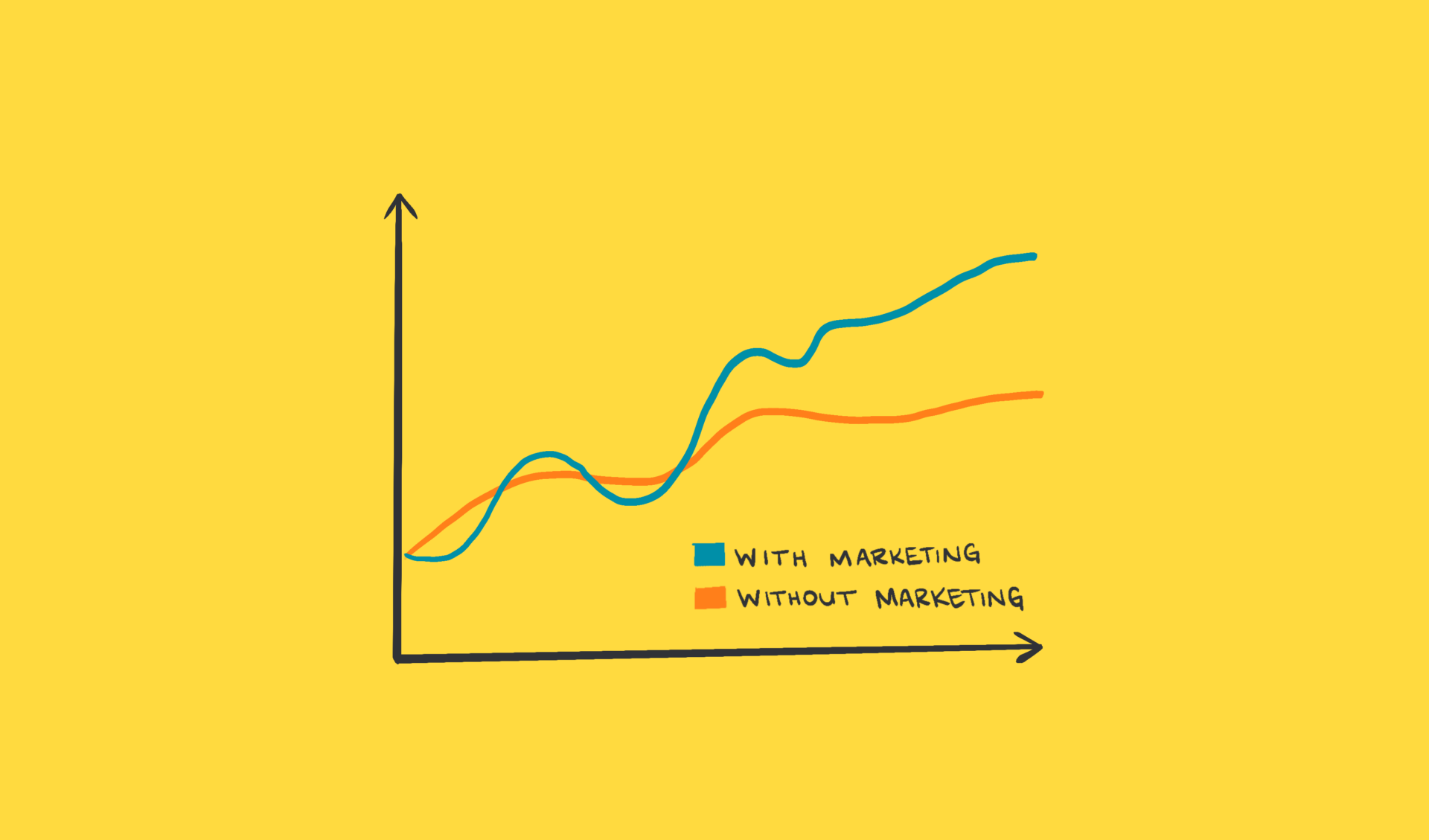
When your company is ready to grow, marketing is an investment that will help you get to the next level. Without a strong marketing plan in place, it is nearly impossible to attract new customers to your business. Marketing generates leads, leads convert into sales and increasing sales means … (your next business goals get inserted here)
With all that said, regardless of the stage of business development you are in, marketing should always be considered as an investment to achieve the business goals.
Studio Locale's 20% GHG Reduction Commitment
Robin discusses GHG reduction pledge with Sustainable Waterloo Region
“All of our team members are mindful of the impact we have on our community and environment. That then extends to the design solutions we provide to our clients, from accessible design to sustainable packaging and web hosting. Being a part of a leading organization like Sustainable Waterloo Region provides our team with the support we need to continue doing our part.”
Robin Mondor, Managing Partner
Read Sustainable Waterloo Region’s Official Announcement Here



